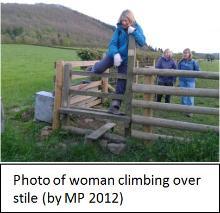Redacting material from your ethesis
Redaction of material from the e-version of your thesis to be shared on WIRE may be necessary for one or more of the following reasons -
Your thesis contains:
- Sensitive or confidential information, this might include signatures, names, addresses, phone numbers or other details that could be used to identify someone, or information that is commercially sensitive such as patent applications. (For more information on personal data, see the International Commissioner’s Office page What is personal data)
- Third-party copyright material you do not have permission to use, such as illustrations in the form of artwork, graphs, maps and other diagrams, or extensive extracts of text from journals, books or other publications that would not be considered fair dealing for criticism, review or quotation
- Photographs of people who have not granted you permission to use their image
You can contact the University’s Scholarly Communications team at wire@wlv.ac.uk for further advice and assistance with clearing third party material or removing personal data.
To redact:
It is usually easier to redact information in a copy of the original document than in a PDF.
Where possible, delete all the restricted information/images and replace with a text box of the same size. Using a text box to replace an image will allow you to retain the same layout as your original thesis and will mean that page numbers and other formatting will not need to be updated.
In the text box note what type of material has been redacted using the word ‘redacted’ or ‘removed’ (see examples below for possible wording).
DO NOT leave the original text behind black highlighting as it may be possible for readers to uncover the text.
You can also add further information about the reason for redaction, such as ‘for confidentiality reasons’ or ‘unable to gain permission from the copyright holder’.
Do not delete any bibliographic references to copyrighted material you have redacted as readers may be able to access third party content via the copyright holder or through a licensed platform.
For example:
Tempus iaculis urna id volutpat lacus laoreet non curabitur. Facilisi morbi tempus iaculis urna. Quam viverra orci sagittis eu volutpat odio facilisis. Congue eu consequat ac felis. Enim eu turpis egestas pretium aenean pharetra.

... becomes:
Tempus iaculis urna id volutpat lacus laoreet non curabitur. Facilisi morbi tempus iaculis urna. Quam viverra orci sagittis eu volutpat odio facilisis. Congue eu consequat ac felis. Enim eu turpis egestas pretium aenean pharetra.
-220x237.png)
If you are unable to replace content with a text box, use meaningless text such as a string of Xs the same length as the original text, and then highlight the text in black. NB You will need to turn off Track Changes and Comments when redacting text so that the original content is not retained in the editing history of the document.
For sensitive information, if the blacked out space might allow readers to work out what information was removed, you may wish to replace the image or text with [REDACTED]. Please note that this might mean you need to change the formatting of the thesis to accommodate the changes.
If redacting information in a PDF, the redaction tool in Adobe Acrobat is recommended.


/prod01/wlvacuk/media/departments/digital-content-and-communications/images-2024/240328-Varsity-Line-Up-Resized.jpg)
/prod01/wlvacuk/media/departments/digital-content-and-communications/images-18-19/220325-Engineers_teach_thumbail.jpg)
/prod01/wlvacuk/media/departments/digital-content-and-communications/images-2024/240423-Additive-Research-Centre-Launched.jpg)
/prod01/wlvacuk/media/departments/digital-content-and-communications/images-2024/240229-The-Link-Resized.jpg)
/prod01/wlvacuk/media/departments/digital-content-and-communications/images-2024/240416-Abi-Dare-Resized.jpg)